Along the transect between Nizamuddin Train Station and the Yamuna River, two primary conditions of disconnect present opportunities for intervention. Distance, lack of unity, and congested circulation separate three parallel lines of transportation. Infrastructural barriers and disparate, conflicting conditions along the transect reinforce the disconnect between Delhi and the Yamuna River.
The intermodal park responds to these conditions with three elements of connectivity. Oriented east-west to reinforce a primary axis connecting the stations, a system of pedestrian paths runs between the city and the river. North-south paths and linear conditions relating the river’s ecology connect beyond the immediate site. The third element comes out of these linear connections and reinforces the connection of people through a system of public spaces: large open Maidans, and smaller linear and pocket parks.
Unifying the system of transportation the intermodal station increases the proximity the three stations and strengthens both their internal and external connectivity and public space. Extending the character of the floodplain into the city, the gradient ecological condition of the intermodal park compresses and blurs the existing disparate layers of the site to reconcile the city to the river.
Creating a commons in a pluralistic society, this intermodal park links both people and places through a system of ecological and public space supported by the city’s transportation infrastructure.
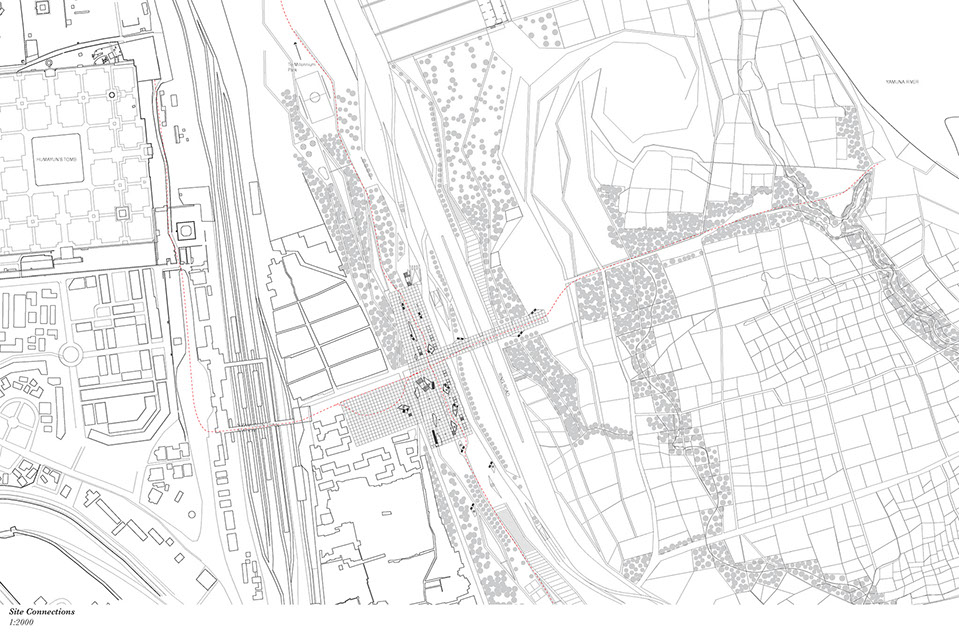
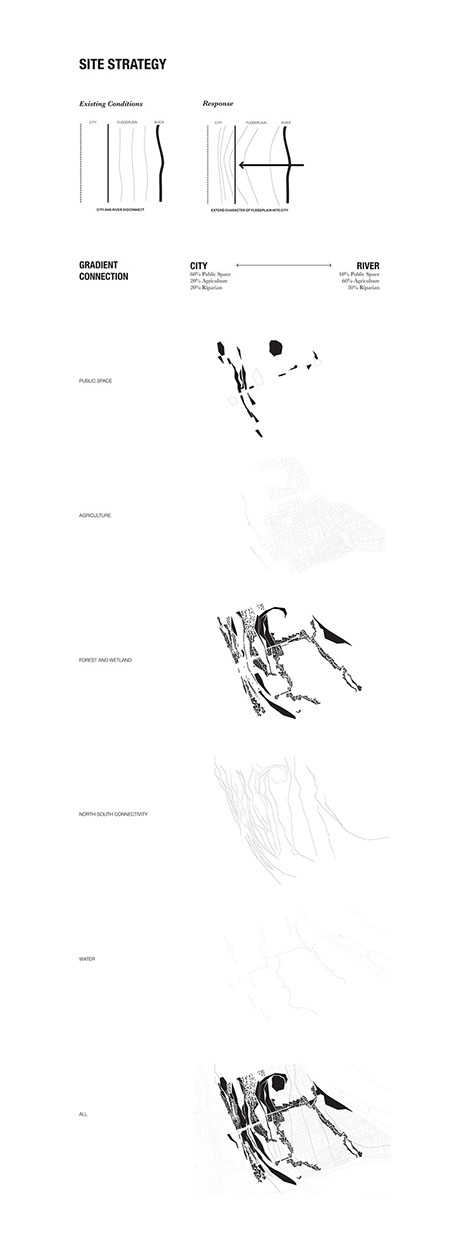
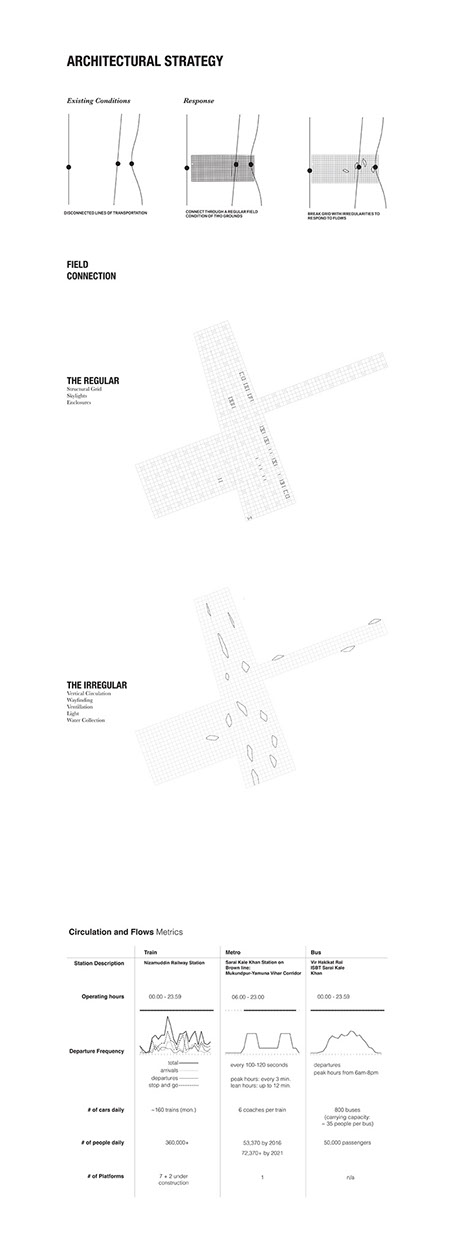
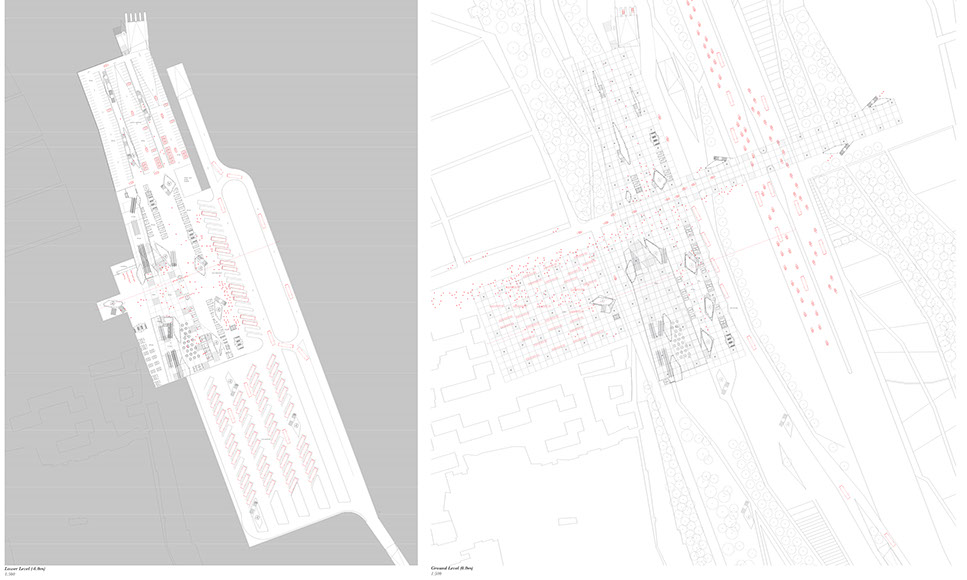
Terminal layout and connection strategy
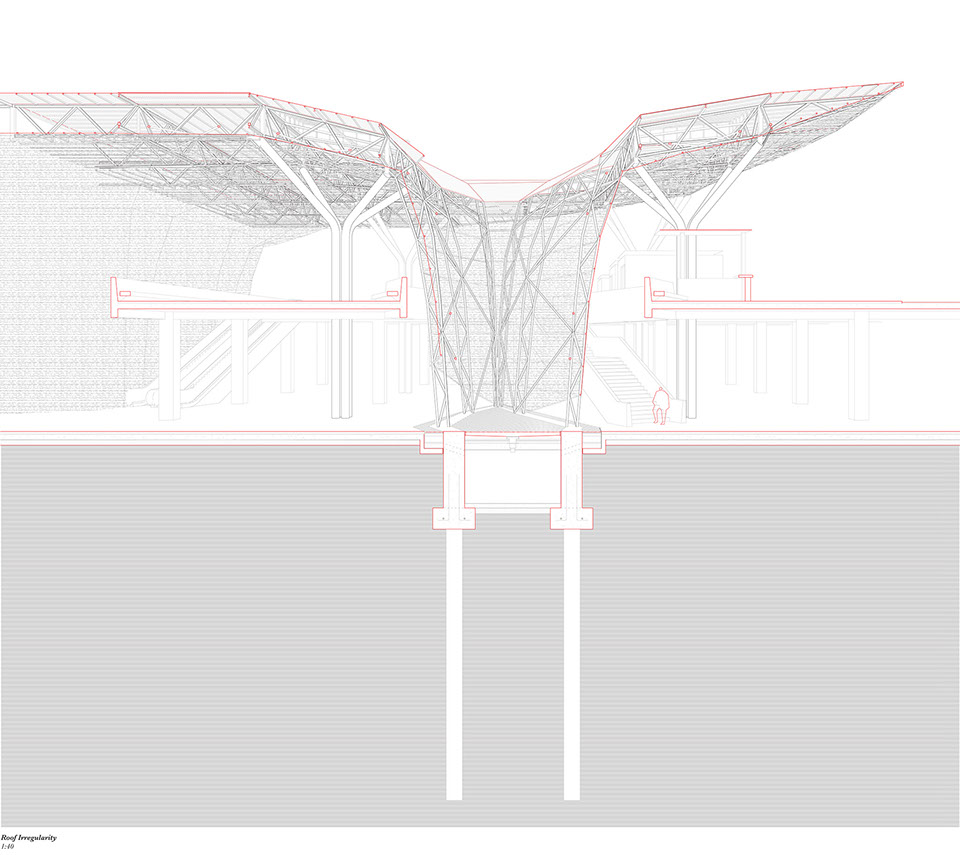
Section through main terminal and canopy

Site section
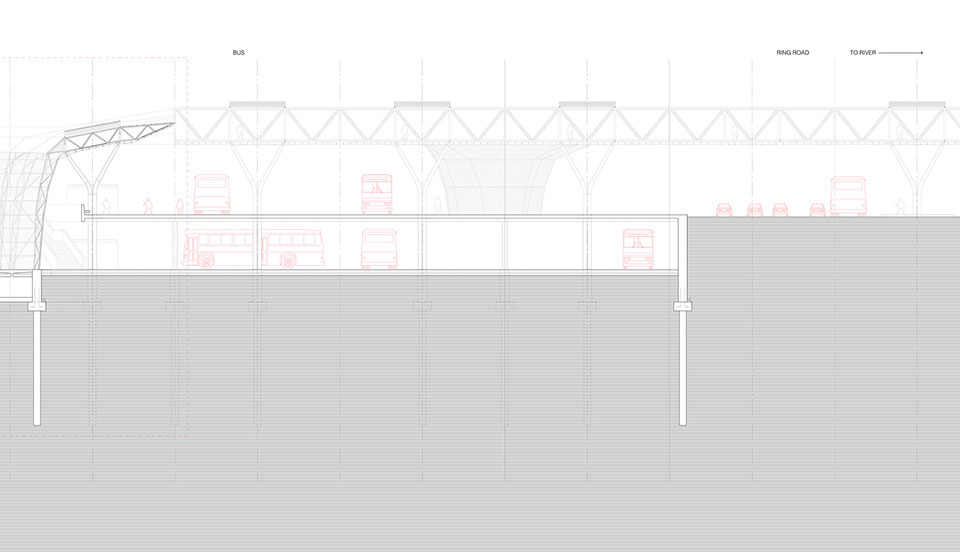
Site section, Zoom A
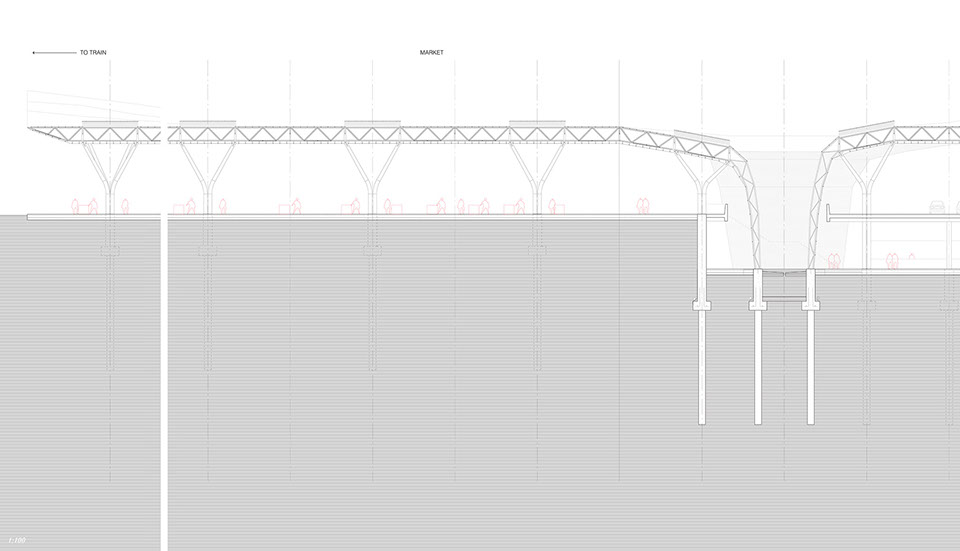
Site section, Zoom B





